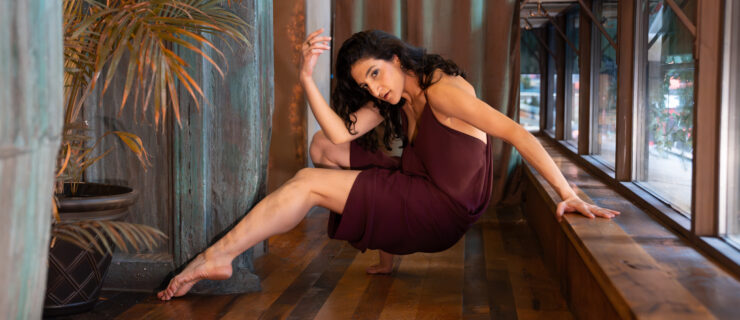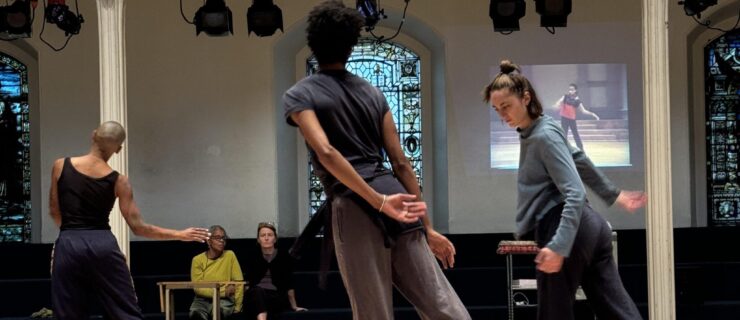Is Dance Criticism Dead?
I’ve been watching a dance story slowly, but steadily, circulate on Facebook: The Atlantic writer Madison Mainwaring’s thought-provoking piece titled “The Death of the American Dance Critic.”
The word “death” may feel dramatic, but it’s not far from the truth. Mainwaring cites many recent examples. The New York Post, The Village Voice, Los Angeles Times and San Francisco Chronicle no longer employ full-time dance writers or editors. And 20-year Time Out New York dance editor Gia Kourlas left the magazine in April after it eliminated its stand-alone dance section. (Full disclosure, Dance Magazine discontinued reviews in 2013.) These days, The New York Times and The Washington Post are the only American newspapers that offer extensive dance coverage.
Mainwaring and her sources offer a few explanations as to why: “Dance is the least respected of the fine arts,” said The New Yorker‘s Joan Acocella. Others point out that writing about a physical art form is no easy task, and it’s just as difficult to find someone with the historical background, concert-going experience and writing chops to do it. Plus, we’re in the middle of a post-60s-70s dance boom era that has unforgivingly aligned itself with one in which newspapers are dropping off and sites like Buzzfeed are growing.
What Mainwaring doesn’t address is the fact that criticism is dying across many forms. Newspapers are doing away with book reviews, classical music reviews, theatre reviews—the list continues. I’d be curious to see a major newspaper’s Google Analytics on the descent of dance criticism page views versus that of other categories. My guess is the graphs wouldn’t look so different. During print’s heyday, there was no objective, data-driven way to dissect how content was consumed. Today, it’s measured in clicks. And clicks translate to advertising revenue. With news media struggling, outlets are just doing what they need to stay alive. And unfortunately, dance isn’t the Everyman’s topic of choice.
So we need to reimagine what arts coverage looks and feels like. That might mean revisiting the most basic of questions, What purpose does dance criticism serve? For a form in which performance runs have a much shorter shelf life than Broadway, art exhibits and music albums, and for which reviews are often published after the show has closed, it’s certainly not to help a potential ticket-buyer decide if they’ll take the plunge. So is it for the artist? The already-opinion formed audience member? The dancegoer that missed out?
The way we digest art, and its writings, has changed. You can follow your favorite talking heads on Twitter, chat with people on message boards and look up performance venues and companies on Yelp. And maybe that’s not how you consume your dance content, but I bet it has something to do with how those not as well versed in dance consume theirs.
Of course, there are many dangers in boiling down your opinions about a performance into 140 characters, as there are with turning them into “Top 10” list click bait. It would trivialize dance, and push it even further away from being considered a legitimate form. But what if integrating some of these ideas help us humanize it? Part of the problem Mainwaring presents is dance’s cultural elitism. What if we made dance writing as accessible as the way entertainment writers talk about celebrity sightings?
Yes, the thought makes me cringe, too. But there has to be a middle ground.
It looks like one of those last-surviving dance columns, at The New York Times, has been testing the waters. Last week, it published a story about ballet coming to life on Instagram. (In my opinion, it was a good step forward, but not necessarily successful. What could have been a compelling visual journey was bogged down by too much text, almost canceling out the legitimacy of the piece, and very few photos of the topic at hand.) A few days later, it posted a wonderful piece by Twyla Tharp, who recounted her first day of rehearsal for her upcoming tour, complete with personal photos. What better way to humanize dance than to give a voice to a prominent dancemaker—her process, passions and quirks?
This is how you get a non-dancer interested in dance. Demystify the artists who we so often put on a ridiculous pedestal. As readers learn more about the perspective of the person behind the work, they’ll want an expert’s perspective on it as well.
Mainwaring points out that dance is a barometer of the great discussions happening in our world. We need to make that connection clearer. There’s a reason why people who have never seen ballet lined up to buy tickets to Misty Copeland’s spring performances with American Ballet Theatre. We were given a look into Copeland’s background, and wanted to see how that directly shaped her stage self, her art. And you know what? I bet a lot of people—whether they saw her perform at the Met or not—looked up her reviews.




